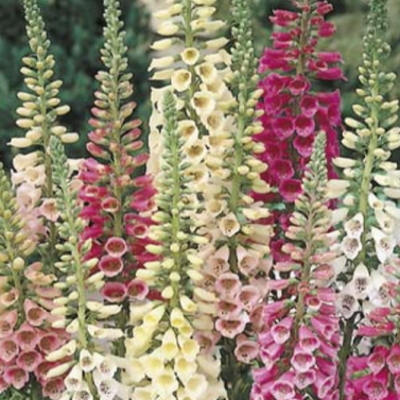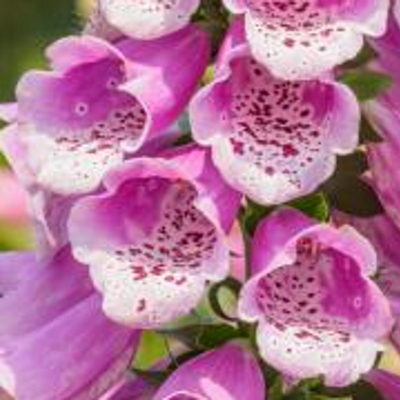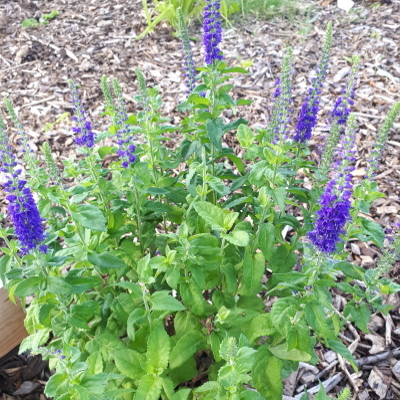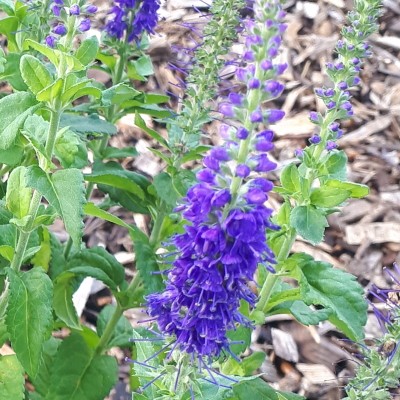-
-
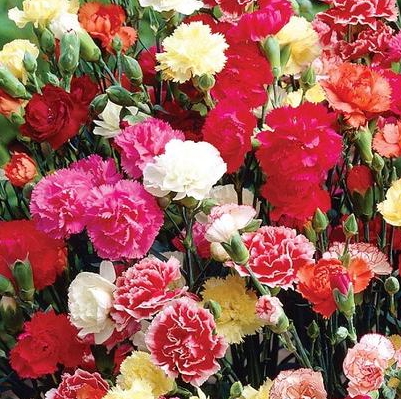
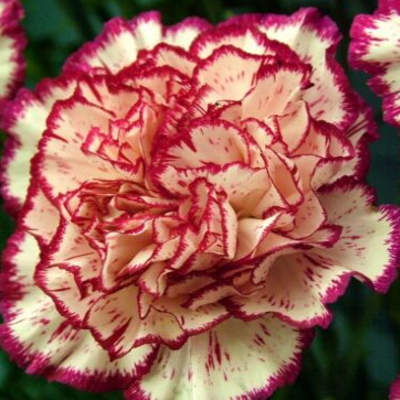 Chabauds Giant Carnation is a half-hardy biennial prized for its long bloom season. Large flowers with lovely spicy, clove-like fragrance bloom in many shades of crimson, red, rose, pink, yellow, and white. Carnations grown in groups make a striking attraction in gardens. For early blooms, start indoors 6-8 weeks before the last frost. Thin or transplant when 15-25 cm tall. This tender perennial can overwinter in milder climates. To overwinter in Zone 3b to 4a cover with a thick layer of mulch but remove mulch in early spring. One of the garden favourites-Chabauds Giant Carnation does not readily self-sow. Harvest early spent blossom head by cutting stem near the ground and hang dry with a paper bag tied around the stem to catch seeds that may drop.
Chabauds Giant Carnation is a half-hardy biennial prized for its long bloom season. Large flowers with lovely spicy, clove-like fragrance bloom in many shades of crimson, red, rose, pink, yellow, and white. Carnations grown in groups make a striking attraction in gardens. For early blooms, start indoors 6-8 weeks before the last frost. Thin or transplant when 15-25 cm tall. This tender perennial can overwinter in milder climates. To overwinter in Zone 3b to 4a cover with a thick layer of mulch but remove mulch in early spring. One of the garden favourites-Chabauds Giant Carnation does not readily self-sow. Harvest early spent blossom head by cutting stem near the ground and hang dry with a paper bag tied around the stem to catch seeds that may drop. -
Out of stock
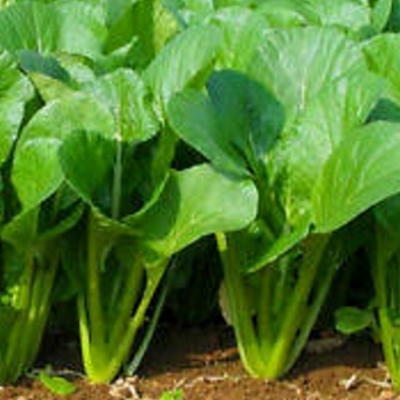
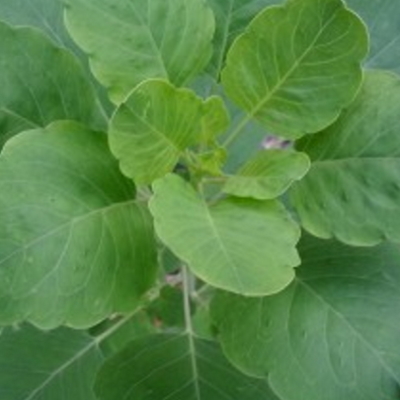
Ethiopian Kale matures in 40 days. Technically, a Mustard, Ethiopian Kale is an unusual leafy green. The hearty leaves have a very complex flavor with overtones of spice and garlic. Great for picking at the baby size in under 3 weeks, or waiting for fully grown leaves. Ethiopian Kale works great makes delicious salad mix, standalone raw, or lightly cooked. An extra cold-tolerant and drought-resistant crop. If you're going to try only one new green this year, Ethiopian Kale should be your first choice.
-
Out of stock
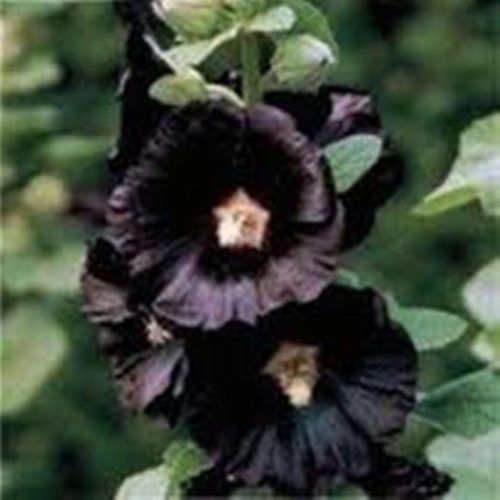 Biennial. This traditional variety is shockingly beautiful and richly coloured with its near-black flowers with just a hint of red. Gorgeous planted in the back of your flower bed or next to white buildings white flowers. A must for historical gardens.
Biennial. This traditional variety is shockingly beautiful and richly coloured with its near-black flowers with just a hint of red. Gorgeous planted in the back of your flower bed or next to white buildings white flowers. A must for historical gardens. -
Out of stock
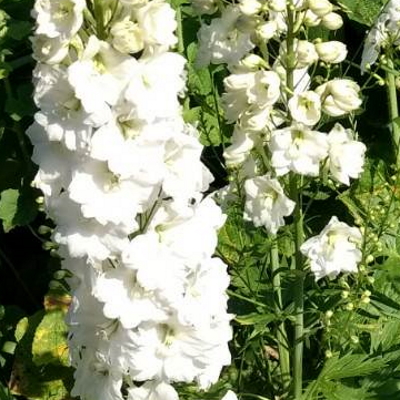
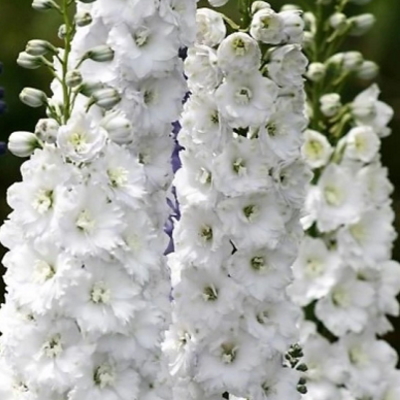 An F1 hybrid breeding breakthrough. Excellent bloom production during short days for cut flowers. GREENHOUSE: Sow in Jan. or early Feb. Freeze seed for 24 hrs. just before sowing, to break dormancy. Use Jiffy Mix or fine sand for a growing medium. Germinate in cool soil at 54°F/12°C for 20 days, according to color (best colors are smallest seedlings). High temp. will prevent germ. Grow seedlings cool, at 60°F/16°C days and 50°F/10°C nights. DIRECT SOWING: Sow outside in late August in cool soil. Freeze seed 24 hours before sowing. Do not pinch the flower heads. For improved blossoms, add lime to the soil each year.
An F1 hybrid breeding breakthrough. Excellent bloom production during short days for cut flowers. GREENHOUSE: Sow in Jan. or early Feb. Freeze seed for 24 hrs. just before sowing, to break dormancy. Use Jiffy Mix or fine sand for a growing medium. Germinate in cool soil at 54°F/12°C for 20 days, according to color (best colors are smallest seedlings). High temp. will prevent germ. Grow seedlings cool, at 60°F/16°C days and 50°F/10°C nights. DIRECT SOWING: Sow outside in late August in cool soil. Freeze seed 24 hours before sowing. Do not pinch the flower heads. For improved blossoms, add lime to the soil each year. -
Out of stock
 Single daisy-like flowers in shades of pink, red, rose, or white completely cover the 75 cm high bushy plants from May through June. Gorgeous spring and summer colour in sun or partial shade. Invaluable for cutting, cut as soon as colour shows. If cutting for dried flowers harvest immediately after bloom opens. Avoid high fertility. Moist, well-drained soil is best–try raised beds or containers if your soil is heavy. Hardy to Zone 5 with protection. These daisies often self-seed and interestingly, direct sown or self-sown established plants are hardier than transplants.
Single daisy-like flowers in shades of pink, red, rose, or white completely cover the 75 cm high bushy plants from May through June. Gorgeous spring and summer colour in sun or partial shade. Invaluable for cutting, cut as soon as colour shows. If cutting for dried flowers harvest immediately after bloom opens. Avoid high fertility. Moist, well-drained soil is best–try raised beds or containers if your soil is heavy. Hardy to Zone 5 with protection. These daisies often self-seed and interestingly, direct sown or self-sown established plants are hardier than transplants. -
Out of stock
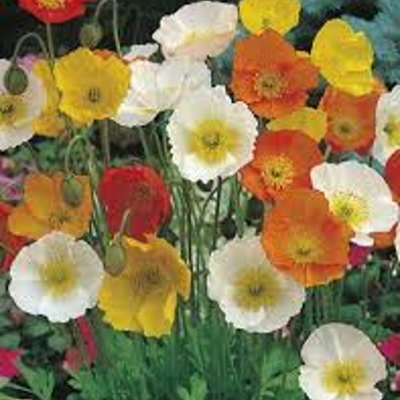 Papaver nudicaule. The Iceland Poppy is a hardy short-lived perennial. It self sows easily so will last for years to come. The cup-shaped blooms have a texture like crepe paper and appear in a range of subdued pastel colours; apricot, gold, tangerine, and white. Sow Iceland Poppy seeds in early spring or late fall where they are to grow permanently. The flower stalks grow to around 30cm tall and are among the longest-lasting poppies as cut flowers. Use a candlestick to seal the cut stem to prolong them as cut flowers. They are highly attractive to bees. Plant in late fall or early spring. Poppy seeds need to be cold stratified to germinate. Poppies only need soil that is ordinary and moist, but well-drained. The seeds should not be planted deeply; they just need to be compressed into the soil, as they need light to germinate. The best method for planting is to mix one part seed with 5 parts sand and scatter over the prepared growing area.
Papaver nudicaule. The Iceland Poppy is a hardy short-lived perennial. It self sows easily so will last for years to come. The cup-shaped blooms have a texture like crepe paper and appear in a range of subdued pastel colours; apricot, gold, tangerine, and white. Sow Iceland Poppy seeds in early spring or late fall where they are to grow permanently. The flower stalks grow to around 30cm tall and are among the longest-lasting poppies as cut flowers. Use a candlestick to seal the cut stem to prolong them as cut flowers. They are highly attractive to bees. Plant in late fall or early spring. Poppy seeds need to be cold stratified to germinate. Poppies only need soil that is ordinary and moist, but well-drained. The seeds should not be planted deeply; they just need to be compressed into the soil, as they need light to germinate. The best method for planting is to mix one part seed with 5 parts sand and scatter over the prepared growing area. -
Out of stock
 This delightful Japanese Catmint has many merits. Both the foliage and the flowers are fragrant. It blooms the first year from seed, unlike most perennials. It is upright and nicely branched, rather than sprawling. Make it a centerpiece of your containers and sunny-to-partly-shaded garden areas! Panther Dark Blue walked off with the Bronze Medal at Holland's prestigious Plantarium competition in 2015. The attractive little plant is much more compact than other catmint species, standing just 20 cm high and 25 cm wide. The foliage is bright green, glossy, and toothed, releasing a strong, heavenly fragrance from spring through fall. Profuse bloomer! Medium to dark blue, these tubular flowers reach up to 5 cm long, held in nice clusters on the top of the plant. The blossoms are fragrant, and they begin in early summer and go right through into early fall. You'll be amazed by the flower power of this petite plant.
This delightful Japanese Catmint has many merits. Both the foliage and the flowers are fragrant. It blooms the first year from seed, unlike most perennials. It is upright and nicely branched, rather than sprawling. Make it a centerpiece of your containers and sunny-to-partly-shaded garden areas! Panther Dark Blue walked off with the Bronze Medal at Holland's prestigious Plantarium competition in 2015. The attractive little plant is much more compact than other catmint species, standing just 20 cm high and 25 cm wide. The foliage is bright green, glossy, and toothed, releasing a strong, heavenly fragrance from spring through fall. Profuse bloomer! Medium to dark blue, these tubular flowers reach up to 5 cm long, held in nice clusters on the top of the plant. The blossoms are fragrant, and they begin in early summer and go right through into early fall. You'll be amazed by the flower power of this petite plant. -
Out of stock
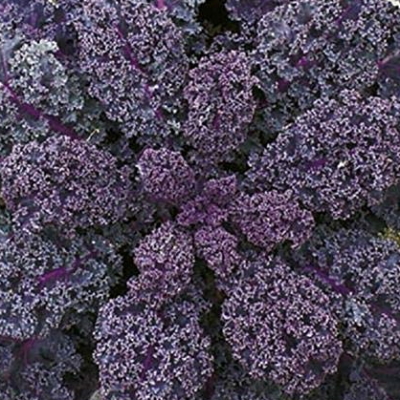
The broad, frilly, purple leaves grow on 60-90 cm tall, upright stalks. Red color on a blue-green background. Great for baby leaf and bunching. Scarlet has great flavour either as baby leaf or mature kale, and the flavour improves after frost. This kale is a must in an organic garden and is highly decorative in salads and stir-fries. Plant Scarlet kale in cow pots 4-6 weeks before the last frost, direct sow in early spring, and in mid-July for a fall crop. Scarlet Kale can grow 60-90 cm high. Boiling kale loses much of the nutritious properties while steaming and microwaving keep more cancer-fighting properties.
-
Out of stock
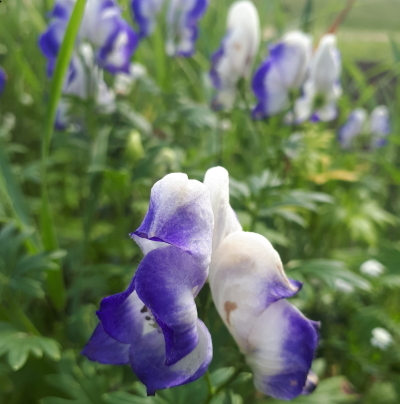 25 seeds per order. Purple Monkshood seeds 2020 harvest.
25 seeds per order. Purple Monkshood seeds 2020 harvest. -
Out of stock
 Tiny blue flowers are an iconic addition to any garden. Although not a ‘true’ forget-me-not, this species has very similar flowers. This easy-to-grow annual blooms just weeks after planting and grows in almost any sunny spot. Chinese Forget-Me-Not attracts bees, butterflies, and hummingbirds to the garden and makes for gorgeous cut flowers. Self-seeding annual.
Tiny blue flowers are an iconic addition to any garden. Although not a ‘true’ forget-me-not, this species has very similar flowers. This easy-to-grow annual blooms just weeks after planting and grows in almost any sunny spot. Chinese Forget-Me-Not attracts bees, butterflies, and hummingbirds to the garden and makes for gorgeous cut flowers. Self-seeding annual. -
Out of stock
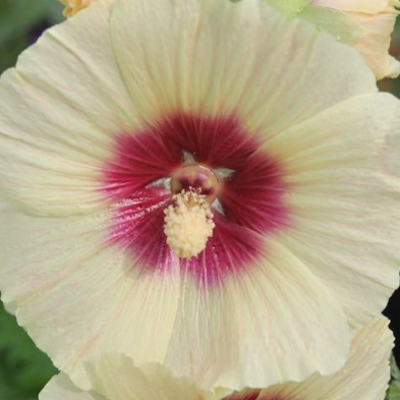
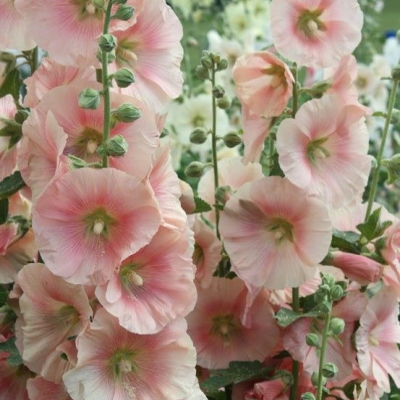 Hollyhock Seeds -Coral & Indian Spring Mix The semi-tall stalks of Indian Spring Hollyhock are filled with single and semi-double blooms in shades of pink, coral, white, cream, purple, and lavender. Prolifically blooming, Indian Spring Mix is known to bloom in its first year, which is unusual for Hollyhocks.
Hollyhock Seeds -Coral & Indian Spring Mix The semi-tall stalks of Indian Spring Hollyhock are filled with single and semi-double blooms in shades of pink, coral, white, cream, purple, and lavender. Prolifically blooming, Indian Spring Mix is known to bloom in its first year, which is unusual for Hollyhocks. -
Out of stock
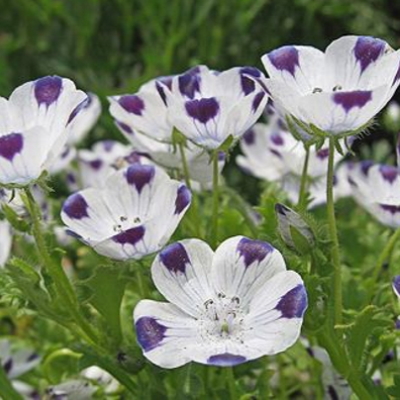
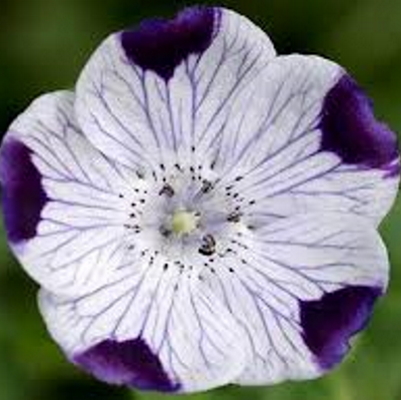 Five spot wildflowers are named for their distinct flowers: 2.5 cm light blue on white blossoms of five petals, each of which is tipped with a vivid, deep purple spot. They are reasonably compact plants that grow to 30 cm high and 20 cm wide and do not spread over the course of the summer. They prefer cool climates, germinating best in soil temperatures of 13-18 C. Perfect for cool springs. They should be able to survive if given lots of shade. They are annuals, and they’ll die back with the first frost. If allowed to die back naturally they reseeds and you will have new plants next year. They bloom consistently and impressively all spring long.
Five spot wildflowers are named for their distinct flowers: 2.5 cm light blue on white blossoms of five petals, each of which is tipped with a vivid, deep purple spot. They are reasonably compact plants that grow to 30 cm high and 20 cm wide and do not spread over the course of the summer. They prefer cool climates, germinating best in soil temperatures of 13-18 C. Perfect for cool springs. They should be able to survive if given lots of shade. They are annuals, and they’ll die back with the first frost. If allowed to die back naturally they reseeds and you will have new plants next year. They bloom consistently and impressively all spring long. -
Out of stock
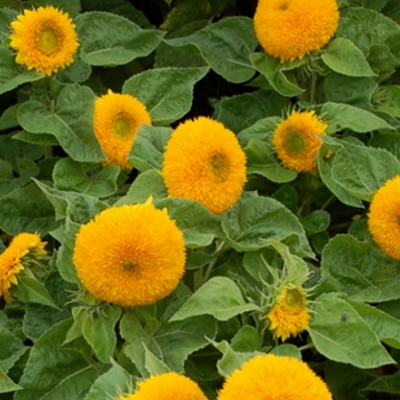
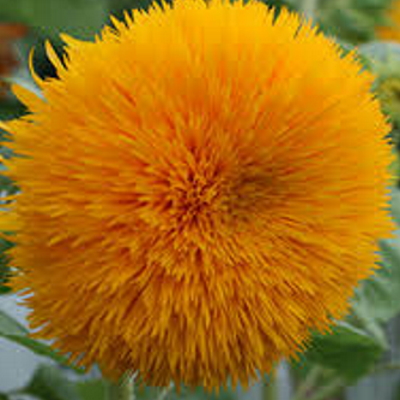 Sunflower ‘Teddy Bear’ is a short, bushy plant with fluffy, golden-yellow blooms that appear from mid-summer to the first frost in autumn. The mature size of Teddy Bear sunflower plants is 4 to 5 feet (1.4 m.). Growing Teddy Bear sunflowers by seed isn’t complicated. The most important thing is to plant seeds where your Teddy Bear sunflower plants will be exposed to full sunlight. Well-drained soil is also an absolute requirement for any type of sunflower. Plant Teddy Bear sunflower seeds after you’re sure all danger of frost has passed. Prepare the soil prior to planting sunflowers by digging a generous amount of compost, well-rotted manure, or other organic matter into the top 15-20 cm of soil. Sow seeds in groups of three, at a depth of ½ inch. Thin the plants to a distance of 40-60 cm when the true leaves appear. Water as needed to keep the soil moist, but not drenched, until your sunflower ‘Teddy Bear’ plants are established Sunflower seeds should be direct sown in the garden. If starting 3-4 weeks early plant in large cow pots so roots are not disturbed when transplanting into the garden.
Sunflower ‘Teddy Bear’ is a short, bushy plant with fluffy, golden-yellow blooms that appear from mid-summer to the first frost in autumn. The mature size of Teddy Bear sunflower plants is 4 to 5 feet (1.4 m.). Growing Teddy Bear sunflowers by seed isn’t complicated. The most important thing is to plant seeds where your Teddy Bear sunflower plants will be exposed to full sunlight. Well-drained soil is also an absolute requirement for any type of sunflower. Plant Teddy Bear sunflower seeds after you’re sure all danger of frost has passed. Prepare the soil prior to planting sunflowers by digging a generous amount of compost, well-rotted manure, or other organic matter into the top 15-20 cm of soil. Sow seeds in groups of three, at a depth of ½ inch. Thin the plants to a distance of 40-60 cm when the true leaves appear. Water as needed to keep the soil moist, but not drenched, until your sunflower ‘Teddy Bear’ plants are established Sunflower seeds should be direct sown in the garden. If starting 3-4 weeks early plant in large cow pots so roots are not disturbed when transplanting into the garden. -
-
Out of stock
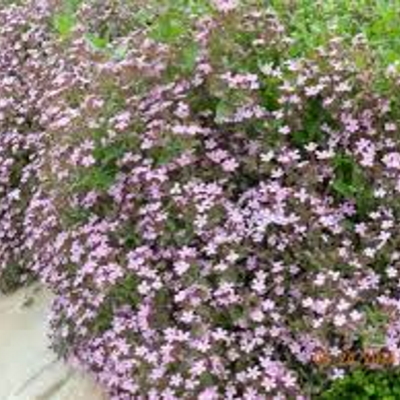
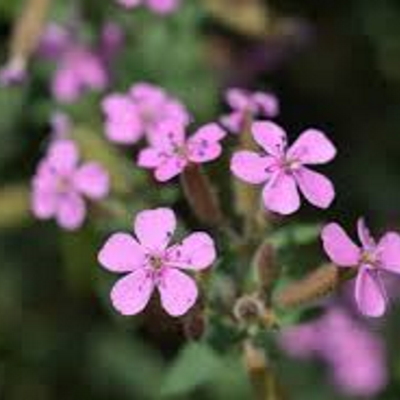 Soapwort is a favourite perennial for cool-alpine and rock gardens. This semi-evergreen blooms from May to August with five-petaled pink flowers joined at the base to form a nectar tube that is highly attractive to bees. Provide good drainage. The roots really can be used to make soap. Rock Soapwort looks marvelous in containers, but best in situations when it can trail and seed itself. Sturdy and easy to grow. Stems are thicker, stronger, taller, and easier to manage than those of annual gypsophila, an otherwise similar flower. 3/4 to 1" dusty pink blooms float above gray-blue, waxy foliage. Branching plant habit. Also known as cow soapwort.
Soapwort is a favourite perennial for cool-alpine and rock gardens. This semi-evergreen blooms from May to August with five-petaled pink flowers joined at the base to form a nectar tube that is highly attractive to bees. Provide good drainage. The roots really can be used to make soap. Rock Soapwort looks marvelous in containers, but best in situations when it can trail and seed itself. Sturdy and easy to grow. Stems are thicker, stronger, taller, and easier to manage than those of annual gypsophila, an otherwise similar flower. 3/4 to 1" dusty pink blooms float above gray-blue, waxy foliage. Branching plant habit. Also known as cow soapwort. -
Out of stock
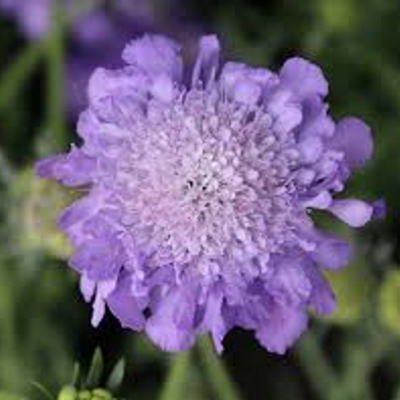
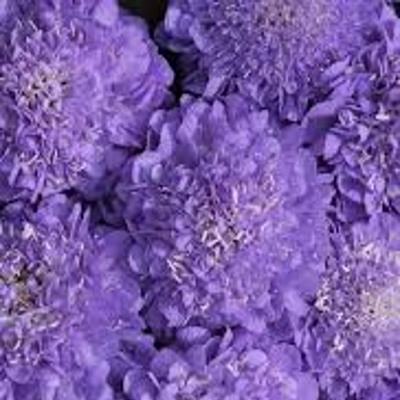
a.k.a Pincushion Flower
Elegant and uniform cut flower.
Matures in 90-100 days Package contains: 50 Seeds1 1/2–2 1/2", lavender-blue flowers stand tall on strong, slender stems. A dramatic addition to any bouquet or garden. Also known as mourning bride -
Sale!Out of stock
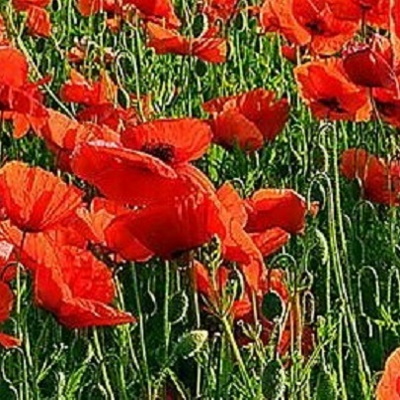

Description
Flanders Field Poppy Seeds is an Heirloom Flower. These very symbolic WWI flowers were the common field poppies of Europe. The brilliant crimson, single red blooms with black centres that are long-blooming and very pretty in the garden. These poppies will reseed themselves and can naturalize in your garden. Plants grow to 45 cm (18″) tall in the garden.How to Grow
Sow directly outdoors for the best results. Select a sunny site with well-drained soil. Barely cover the seed with soil and keep moist through the 5-10 day germination period. Enjoys full sun to partial shade location. -
Out of stock
 Enjoy a baby's breath that is actually pink! Plant in your sunny perennial garden and watch as large panicles of true light pink flowers splash your garden from early through midsummer. This upright, well-branched, bush type grows up to 3' tall. Use as a filler plant to cover dying bulb foliage or for perennials that go dormant in the summer months. The pretty pink flowers also are perfect in floral arrangements! Makes an excellent dried flower.
Enjoy a baby's breath that is actually pink! Plant in your sunny perennial garden and watch as large panicles of true light pink flowers splash your garden from early through midsummer. This upright, well-branched, bush type grows up to 3' tall. Use as a filler plant to cover dying bulb foliage or for perennials that go dormant in the summer months. The pretty pink flowers also are perfect in floral arrangements! Makes an excellent dried flower. -
Out of stock
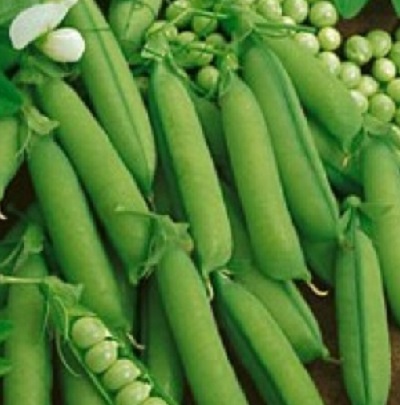 Great for both Spring and Fall planting! Matures in 50-60 days. Expect heavy yields of round, straight, pale green pods, each containing five to eight smooth peas. Peas prefer full sun to partial shade. Space peas 2.5cm-4cm apart. This shorter variety only reaching 90cm (3 feet) a short trellis can be used. They grow best when planted on the crowded side. These are great when eaten fresh in the garden and take only 5-10 days to germinate. They offer 5-7 peas per pod and have a sweet and delicious flavour.
Great for both Spring and Fall planting! Matures in 50-60 days. Expect heavy yields of round, straight, pale green pods, each containing five to eight smooth peas. Peas prefer full sun to partial shade. Space peas 2.5cm-4cm apart. This shorter variety only reaching 90cm (3 feet) a short trellis can be used. They grow best when planted on the crowded side. These are great when eaten fresh in the garden and take only 5-10 days to germinate. They offer 5-7 peas per pod and have a sweet and delicious flavour. -
Out of stock
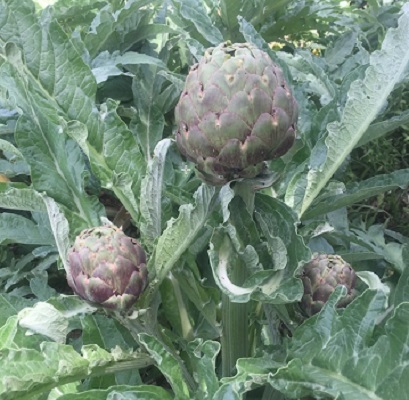
 Start seed indoors in a soil-less mix 8-12 weeks before the last frost date in your area. Sow the seed 6 mm (1/4″) deep and germinate at 21-26 C (70-80 F). When seedlings are 2.5-5 cm (1-2″) high transplant to individual 10 cm (4″) pots and grow on at 15-21 C. Harden off and transplant to the garden after the threat of frost has passed. Artichoke does best in full sun with a deep, organic, fertile soil. Space plants 60-90 cm (24-36″) apart in the row with rows 1.75 m (6′) apart. Keep plants evenly watered and mulch the soil to help preserve soil moisture and keep the soil from becoming too warm in summer. If the soil does become too warm, it can trigger a summer dormant period. Start with a thin layer of mulch and build it up to 10 cm (4″) thick as the plants grow.
Start seed indoors in a soil-less mix 8-12 weeks before the last frost date in your area. Sow the seed 6 mm (1/4″) deep and germinate at 21-26 C (70-80 F). When seedlings are 2.5-5 cm (1-2″) high transplant to individual 10 cm (4″) pots and grow on at 15-21 C. Harden off and transplant to the garden after the threat of frost has passed. Artichoke does best in full sun with a deep, organic, fertile soil. Space plants 60-90 cm (24-36″) apart in the row with rows 1.75 m (6′) apart. Keep plants evenly watered and mulch the soil to help preserve soil moisture and keep the soil from becoming too warm in summer. If the soil does become too warm, it can trigger a summer dormant period. Start with a thin layer of mulch and build it up to 10 cm (4″) thick as the plants grow. -
Out of stock
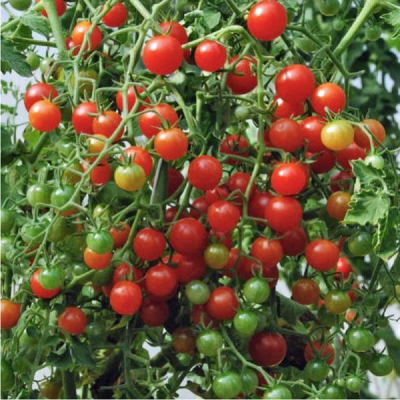 Red Currant plants produce copious quantities of small 1 cm, deep red tomatoes that are exceptionally sweet and packed with flavour. They typically require around 75 days to reach maturity, and make a good choice for containers and hanging baskets, though they are indeterminate growers. Currant tomatoes are native of Peru and Brazil. It was illustrated by Louis Feuille in 1725 Perfect for snacking tomatoes directly from the garden. Great for summer salads. Fruits from early summer until fall frost. Each plant produces 1000's of tiny tomatoes. Best for hanging baskets.
Red Currant plants produce copious quantities of small 1 cm, deep red tomatoes that are exceptionally sweet and packed with flavour. They typically require around 75 days to reach maturity, and make a good choice for containers and hanging baskets, though they are indeterminate growers. Currant tomatoes are native of Peru and Brazil. It was illustrated by Louis Feuille in 1725 Perfect for snacking tomatoes directly from the garden. Great for summer salads. Fruits from early summer until fall frost. Each plant produces 1000's of tiny tomatoes. Best for hanging baskets. -
Out of stock
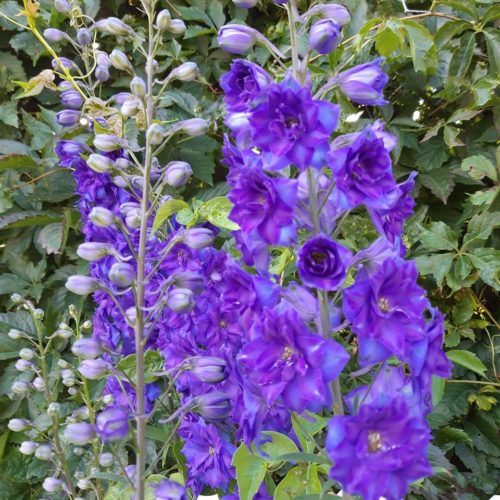 Matures 130-150 days: Also known as Pacific Coast hybrids, Delphinium elatum "Pacific Giant" is a group of regal delphiniums with tall, spiky blooms available in the colors shown. At maturity, the plants reach impressive heights of 1.5-2.5 meters "Pacific Giant" delphiniums are suitable for growing in plant hardiness zones 2 through 9. Long flower-filled spikes bloom in a beautiful blue. The flowers populating the spikes are symmetrically shaped, with huge 8 cm blooms. This delphinium also has mildew resistance.
Matures 130-150 days: Also known as Pacific Coast hybrids, Delphinium elatum "Pacific Giant" is a group of regal delphiniums with tall, spiky blooms available in the colors shown. At maturity, the plants reach impressive heights of 1.5-2.5 meters "Pacific Giant" delphiniums are suitable for growing in plant hardiness zones 2 through 9. Long flower-filled spikes bloom in a beautiful blue. The flowers populating the spikes are symmetrically shaped, with huge 8 cm blooms. This delphinium also has mildew resistance. -
Out of stock
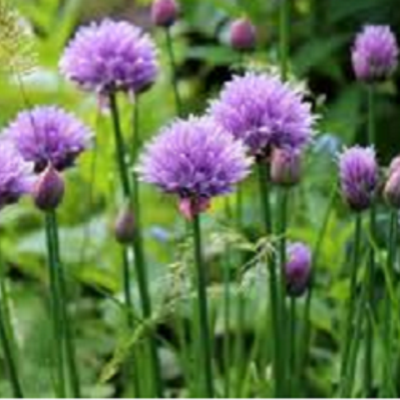 100 Seeds Sow Chives Organic seeds at any time of year. Hardy, perennial, and easy to grow, the chopped stems and pink flowers add a fresh, mild green onion flavour to sandwiches, salads, and baked potatoes. Clumps can be divided in spring or fall. If grown in containers, divide frequently enough to provide for constant lateral growth. Chives are surprisingly hardy and can be harvested all winter if given some protection from extreme cold. They are also quite drought tolerant, so they’re good candidates for xeriscaping. The edible flowers are highly attractive to bumblebees, hoverflies, and other beneficial garden insects. Perennial
100 Seeds Sow Chives Organic seeds at any time of year. Hardy, perennial, and easy to grow, the chopped stems and pink flowers add a fresh, mild green onion flavour to sandwiches, salads, and baked potatoes. Clumps can be divided in spring or fall. If grown in containers, divide frequently enough to provide for constant lateral growth. Chives are surprisingly hardy and can be harvested all winter if given some protection from extreme cold. They are also quite drought tolerant, so they’re good candidates for xeriscaping. The edible flowers are highly attractive to bumblebees, hoverflies, and other beneficial garden insects. Perennial
